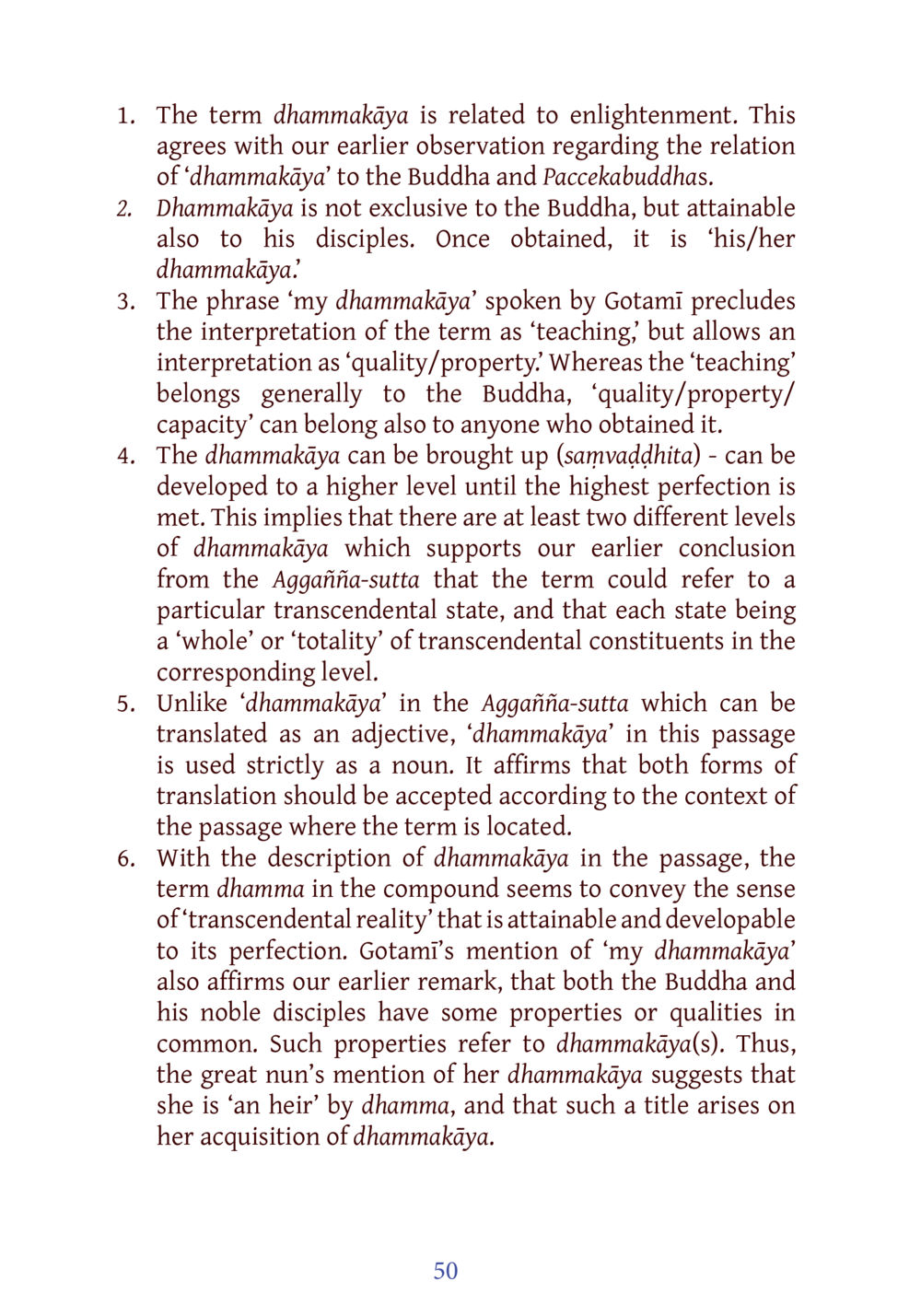Understanding Dhammakāya and Enlightenment : หน้า 71/141
DIRI Journal : หน้า 71/141 Explore the concept of dhammakāya related to enlightenment and its accessibility to both the Buddha and his disciples.
11 ครั้ง

สรุปเนื้อหา
The term 'dhammakāya' signifies enlightenment and is not exclusive to the Buddha but can also be attained by his disciples, as indicated by Gotami's reference to 'my dhammakāya.' This term is interpreted as 'quality' rather than merely 'teaching,' emphasizing that spiritual capacities can belong to anyone who attains them. The dhammakāya can be developed to higher levels, suggesting various states of transcendental reality. This aligns with interpretations from the Āgamaṇa-sutta concerning the nature and levels of dhammakāya. Moreover, Gotami’s expression indicates her status as an 'heir' through dhamma, reflecting that both the Buddha and enlightened disciples share certain qualities of dhammakāya. This overview reinforces the notion of dhammakāya as a substantial quality that encapsulates spiritual attainment and development.
หัวข้อประเด็น
-dhammakāya
-enlightenment
-Buddha
-Paccakabuddhas
-transcendental reality
-qualities of dhammakāya
-spiritual development
ข้อความต้นฉบับในหน้า
หน้าหนังสือทั้งหมด













































































































































